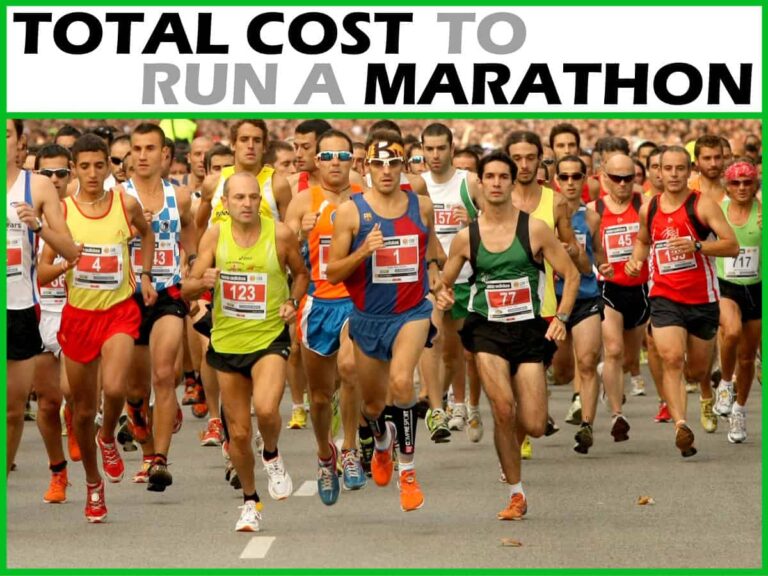8-Week Beginner Sprint Triathlon Training Plan
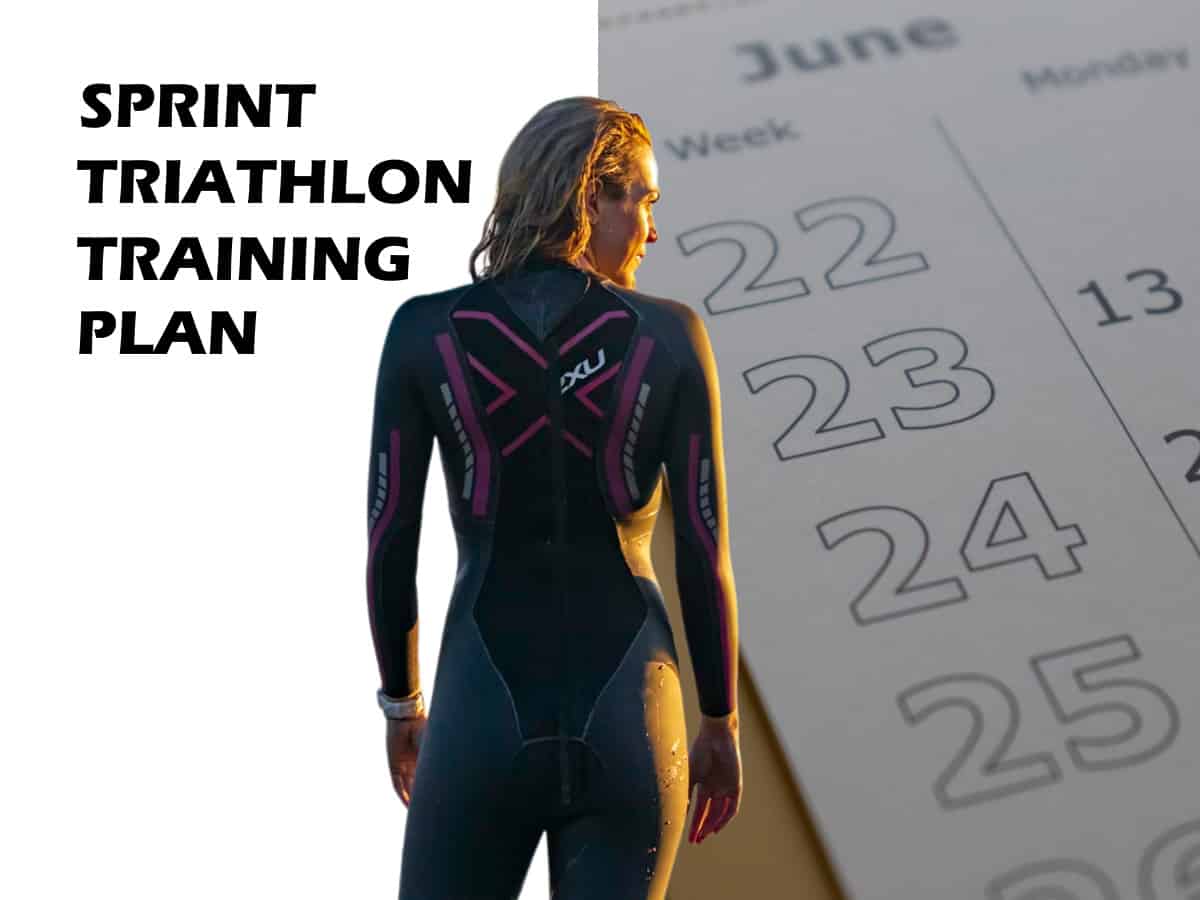
This 8-week sprint triathlon training plan is designed for beginners who can currently swim, bike, and run separately but are seeking a simple, balanced, and effective approach to combining all three. This sprint distance triathlon training program works great even for your first sprint triathlon. If this sounds good to you, read on.
Prerequisites
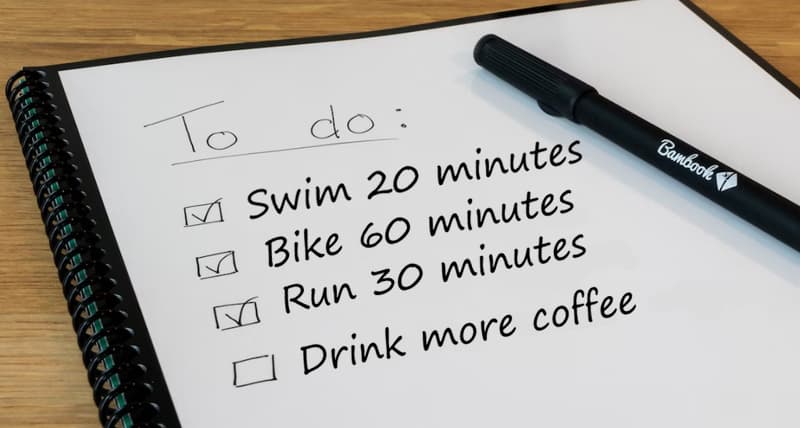
Before starting this sprint triathlon training plan, it’s recommended that you have a basic level of fitness and are comfortable with swimming, biking, and running. Also, make sure to consult with your doctor to ensure that you are physically fit for this type of training.
You don’t need a great triathlon watch or other items to get started, but if you have them, all the better. You will need a functioning bike (a mountain bike will do) and running shoes though.
You should be able to do the following three activities (not consecutively) before starting this training plan.
- Swim continuously for 20 minutes
- Bike continuously for 60 minutes
- Run continuously for 30 minutes
Speed or pace is not important – just your ability to keep going.
Personalize It

It’s important to note that this is a general plan and should be adjusted based on your individual needs and abilities. If you need to change a workout to a different day of the week, feel free to do so.
Just understand that this training plan is cumulative, meaning that each week builds on the previous one. Try not to miss workouts if you can.
Also, this 8-week sprint triathlon training plan is simplified by design. It should allow you to go out and do the work without any risk of overthinking. There are plans available that describe working out in heart rate “zones”, but I think that confuses a lot of beginning athletes.
Also, remember to listen to your body. Adjust the plan when needed, and enjoy the journey!
The Sprint Triathlon Training Plan
The training plan includes a rest day on Monday of each week. Each workout is designed to be completed in the time allocated, but feel free to adjust the intensity or duration based on your fitness level.
The sprint triathlon training schedule includes a combination of swim, bike, run, and brick workouts. A brick workout involves completing two disciplines back-to-back, typically biking and running, to simulate race-day conditions. These workouts are important because they help your body (and mind) adapt to the transition from one discipline to another and help build endurance.
During the first two weeks of the training plan, the focus is on getting comfortable with each discipline. In the following weeks, the plan increases in intensity and includes longer workouts and brick sessions to simulate race conditions. In the final weeks, the plan includes higher-intensity workouts to help you peak on race day.
On the swim workout days, try to focus on completing the full workout while swimming, with minimal rest stops. This may be challenging at first, but it simplifies your swim workouts while preparing you for race day. If the race swim is outside in a lake, river, or ocean, also read open water swimming tips. Finally, if you’re swimming in an open water environment, you might need a great wetsuit to maintain warmth and buoyancy.
Bike rides should be paced at a reasonable effort. You should be able to speak a sentence at a time, but that’s about it. You’re trying to make your body more resilient to the effort. But don’t overdo it either. If you’re constantly out of breath, make sure you’re not a victim of shallow breathing.
Running will typically be at a constant pace, but read this if you’re interested in running faster.
Try not to skip workouts. If you decide to include strength training in your training, make sure it does not jeopardize your swim-bike-run workouts. Remember – consistency is key!
| Week | Mon | Tues | Wed | Thurs | Fri | Sat | Sun |
|---|---|---|---|---|---|---|---|
| 1 | 30 min bike | 20 min swim | 45 min bike | 30 min run | 20 min swim | 45 min bike | 35 min run (easy) |
| 2 | Rest | 20 min swim | 45 min bike | 30 min run | 20 min swim | 60 min bike | 35 min run (easy) |
| 3 | Rest | 25 min swim | 45 min bike | 30 min run | 25 min swim | BRICK: 45 min bike + 10 min run | 30 min run |
| 4 | Rest | 25 min swim | 60 min bike | 30 min run | 25 min swim | 60 min bike | 45 min run (easy) |
| 5 | Rest | 25 min swim | 60 min bike | 30 min run | 25 min swim | BRICK: 60 min bike + 15 min run | BRICK: 30 min bike + 15 min run |
| 6 | Rest | 30 min swim | 60 min bike | 30 min run | 30 min swim | BRICK: 60 min bike + 15 min run | BRICK: 30 min bike + 45 min run |
| 7 | Rest | 30 min swim | BRICK: 60 min bike + 10 min run | 30 min run | 30 min swim | BRICK: 75 min bike + 30 min run | 60 min bike |
| 8 | Rest | 25 min swim | 60 min bike (easy) | 20 min run (easy) | 15 min swim (easy) | 40 min bike (easy) | RACE DAY! |
Recovering From Your Workouts
You’ll get sore after some workouts. You’ll have areas on your body that are more prone to soreness than others. For me, it’s my legs. My quads and calves always get sore.
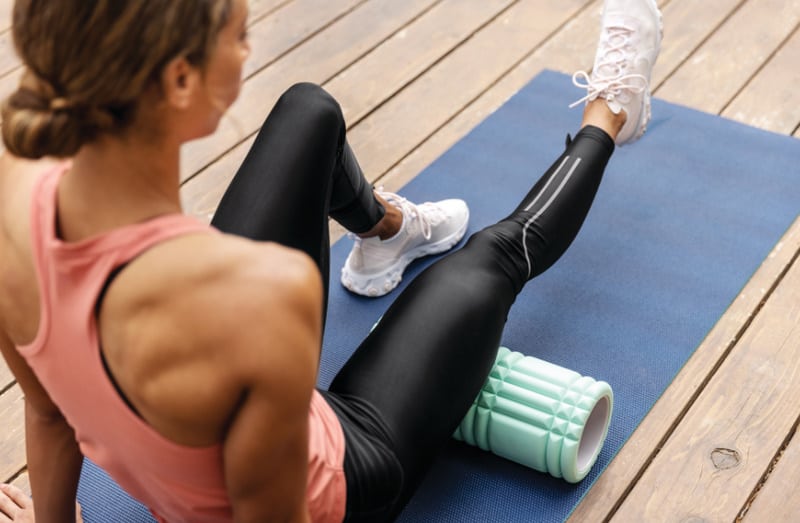
Foam Roller
Using a foam roller is an effective recovery tool for triathletes, as it can help to alleviate muscle soreness and improve flexibility. Foam rolling involves using a cylindrical foam roller to apply pressure to targeted areas of the body. The pressure from the foam roller can help to release tension in the muscles and reduce inflammation, allowing for faster recovery times.
I swear by this process. It’s amazing how fast it seems to work. My leg soreness is gone (or at least minimized) within a day. I use it all the time.
The 5-minute Foam Rolling Routine for Runners is a great resource.
Stretching
In addition to foam rolling, stretching is an excellent way to help prevent injury and improve flexibility. It’s important to stretch after each workout, as well as incorporate stretching into your daily routine.
Get the 10-Minute Nightly Stretching Routine and you won’t regret it.
Cold Plunge
Another effective recovery method is taking an ice bath. Ice baths can help to reduce inflammation and soreness in the muscles, promoting faster recovery times. They can be a challenging experience if you’re not used to the cold water, but many triathletes swear by it as an effective recovery tool.
There are portable ice baths such as the Edge Tub Elite XL that many athletes favor.
Sleep and Hydration
Finally, sleep and hydration play a large part in recovering each day. Cutting your sleep short is an easy way to sabotage your triathlon training, so make it a priority!
Scout the Course
The race website typically shows the course for the race. Well before race day, make sure you are aware of each discipline’s course.
If the swim is outside in open water, plan a time you can actually do an open water swim there. If the traffic is not bad, pre-ride the bike and run courses. Doing this will greatly reduce any pre-race anxiety you may encounter.
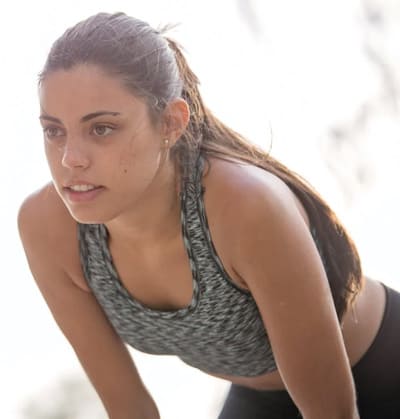
Race Week
You will want to back off the intensity of each workout a bit to ensure maximum recovery for your race. You still want to keep working out daily though since your body should be accustomed to them. Make sure you practice good form but dial it back slightly so as not to introduce any new fatigue. Make sure you keep your heart rate lower than normal during these workouts.
Check out the triathlon checklist to make sure you don’t forget anything.
You’re almost there!
Race Day – Pace Yourself
Race day is exhilarating. It’s when you get to show everyone how much work you’ve put in. It’s easy to get caught up in the excitement and go out too hard, too soon.
Remember that pacing is crucial in a triathlon. Blowing up ruins your race. I’ve done it plenty of times. I recommend starting the swim slower than you’re normal swim workout pace. Force yourself to slow down, so your heart rate doesn’t spike too much. At the halfway point, I speed it up slightly. I do the same for the first mile of the run. It really helps.

Smile
Did you know that smiling helps you race better? Seriously, science says so. Something about smiling while in a tough situation makes the pain hurt less. It’s true, so smile!
Race Your Race
To avoid blowing up, start the race conservatively and focus on maintaining a steady effort throughout the swim, bike, and run. Use your training and race strategy to guide your pace, and listen to your body to avoid pushing too hard too soon.
If someone passes you on the bike, don’t sprint to try to match their pace. Race your race and, not someone else’s. Doing so is how people blow up and don’t have the energy when it comes time to run.
We’ve compiled a pacing chart if you have a desired run time.
You’ll see plenty of people walking on the run because they overexerted themselves on the bike. There is nothing wrong with walking, except when you envisioned yourself running. Then it sucks.
Remember to fuel and hydrate properly throughout the race to keep your energy high and avoid hitting a wall.
Lastly, stay focused on your own race and don’t compare yourself to others. Stick to your race plan, enjoy the experience, and give it your best effort!
You’re competing against the race, that’s it. The race itself is trying to beat you. Finishing the race is how you win. Pace yourself and you can brag forever!
After the Race
Congratulations! Hopefully, your sprint triathlon went as expected and you are satisfied with your performance. You can now call yourself a triathlete!
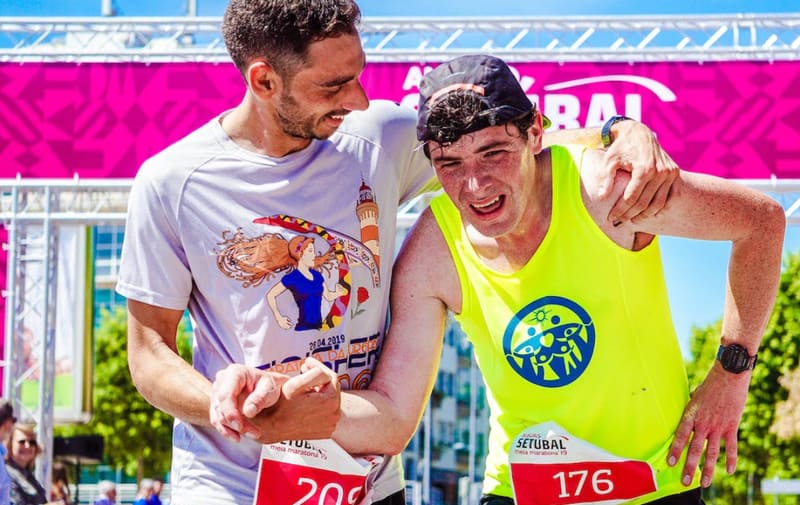
After completing a triathlon, it’s important to take some time to recover and reflect on your achievements. Here are some tips on what to do after a sprint triathlon.
Cool down and stretch
After crossing the finish line, it’s important to keep moving to prevent cramping and stiffness. Take a few minutes to walk or jog slowly and stretch your muscles. Focus on stretching your calves, quads, hamstrings, and hip flexors.
Hydrate and Refuel your body
You have burned a lot of calories during the race, so it’s important to replenish your body with nutrients. Eat a meal with a good balance of protein, carbohydrates, and healthy fats. This will help your muscles recover and prepare your body for future training.
You may have also lost a lot of fluids during the race, so it’s important to rehydrate with a sports drink to avoid dehydration.
Reflect on your performance
Take some time to reflect on your performance and what you have achieved. Think about what went well during the race and what you could have improved on. Celebrate your achievements and learn from your mistakes.
Take some time to rest
Give your body some time to rest and recover. Take a few days off from training and focus on relaxation and recovery. Or even better – go ahead and ride your bike, but keep the intensity very easy.
Plan your next race
Hopefully, you’re motivated to take on another challenge. Use this time to plan your next race and set new goals for yourself (perhaps an Olympic distance triathlon this time). Think about what you want to achieve and how you can improve your performance.
Conclusion
Completing a sprint triathlon is a great accomplishment. Thank you for letting us be part of your adventure. Remember to cool down, refuel your body, hydrate, reflect on your performance, rest, and plan for your next race.
The easiest way to maintain fitness is to work out year-round. Check out some winter activities that will help you stay fit. Or check out our half-marathon training plan and sign up for a race!
Good luck with your future races!

